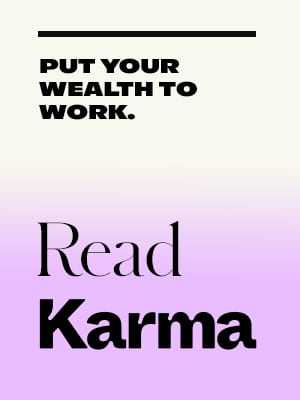- Hoarding of toilet paper in the U.S. has led to local shortages and sparked demand for bidets.
- The bathroom appliances are no longer expensive luxuries in North America. TUSHY, BioBidet, Brondell, and Sonny market budget-priced bidets.
- A switch to bidets would produce environmental and medical benefits, since Americans account for 4% of the world’s population but use 20% of the planet’s TP.
What has long been considered a luxury item for U.S. bathrooms — the bidet — may go mainstream thanks to toilet-paper hoarding driven by the coronavirus pandemic.
It’s a shift that may pay off with big environmental benefits.
Bidets, which project a stream of water in lieu of paper wipes, are common in Asia and Europe but haven’t managed to gain an American foothold outside the bathrooms of the ultra-wealthy — until now. The pandemic has led to an increase in bidets that coincides with the emergence of budget-priced bidet attachments, or washlets, from companies including Brondell, BioBidet, TUSHY and Sonny.
“We are experiencing a ten-fold increase in sales at the moment and have been firing on all cylinders since the middle of last week,” Daniel Lalley, a spokesman for Brondell, told Karma. The company expects to meet surging demand “amid what is turning out to be the toilet paper wars of 2020.”
U.S. interest in the bathroom fixture started climbing in 2016 and the market in the country is now at about $106 million. Before COVID-19 hit, the U.S. bidet market was expected to grow 15% by 2021. Since the pandemic began, bidet retailers are now reporting a significant increase in sales, and reviews website Wirecutter reported that its bidet-buying guide was the second-most-read on the site from March 13-15.
“Since the outbreak of COVID-19, we’re seeing record-breaking traffic and sales with no signs of slowing down,” Spencer Weidner, marketing strategist at BioBidet. “We have all hands on deck processing orders and making sure we’re able to provide products to as many homes as possible.”
As early as 2009, scientists were pushing for wider adoption of bidets as far better for the environment than toilet paper. The average American consumes 141 rolls of toilet paper a year, twice as many as the 70 rolls used in bidet-rich Italy, according to a Natural Resources Defense Council report. The 37 gallons of water required to make each roll adds up, as do the 387 trees needed to create a single person’s lifetime supply of toilet paper.
“Tissue products such as toilet paper, paper towels, and facial tissue are cheap and convenient — but they cost the planet a great deal,” Jennifer Skene, an environmental law fellow with NRDC, said in the report. “These impacts are compounded by the fact that the United States is a particularly voracious consumer of tissue products.”
Why was the U.S. bidet market so silent until recently? Part of it is cultural. The first efforts to bring bidets to the U.S. in the 1960s failed in large part because Americans familiar with bidets at the time only knew of them from European and Japanese brothels during World War II. Both the passage of time and the expansion of international travel have eliminated that impediment.
“One of the benefits of Bidet-life is the drastic reduction of toilet paper usage,” Tom Lotrecchiano, the co-founder of luxury bidet-maker Omigo, told Karma. “While many of our recent customers were inspired by the current shortage they’re acknowledging that modern bidets get you cleaner and are healthier.”
“The time for bidets is now.”
Price has also been a barrier. In fact, the luxury factor, reinforced in film and television, might be what stalled the mass market for so long. Bidets were never presented as an option for middle-class consumers. Product innovation has cut the starting price point for bidets, though. Whereas luxury toilets with built-in bidets can cost thousands of dollars, attachment versions can now do the same job for a fraction of the cost and without complex installation.
“While bidets are already common overseas, Americans are now embracing them as a welcome alternative to toilet paper,” Weidner said. “Many people simply haven’t experienced or encountered them after being accustomed to toilet paper for so long, but with shortages occurring throughout the nation, people are starting to take a different perspective on their hygiene.”
TUSHY’s bidet attachment retails for $79 — a price comparable to BioBidet and Brondell’s attachment models and to what many Americans spend each year on toilet paper. Sonny, the most recent market entrant, raised more than $1 million on Indiegogo for its $99 portable bidets. Both TUSHY and Sonny also invest in solutions to the global sanitation crisis, which annually leaves more than 4 billion people without access to clean, safe toilets.
“Recent advances in technology and design have transformed bidets into modern necessities that attach to your existing toilet,” Weidner said. “It’s all about being clean, comfortable, and cutting back on toilet paper. “
There’s also been a misconception that bidets are only for women. This isn’t the case, and they are hygienic for men. Some bidet converts refuse to use conventional toilets, which has led to the development of travel bidets.
In addition to the environmental positives, using a bidet also reduces the risk of rashes, hemorrhoids and other unpleasant side effects that can come from wiping with dry paper.
“We’ve always believed bidets are far more efficient and eco-friendly than using toilet paper but, in the recent weeks, we’ve all truly seen the benefits of these toilet paper alternatives,” Lalley said. “The time for bidets is now.”






















